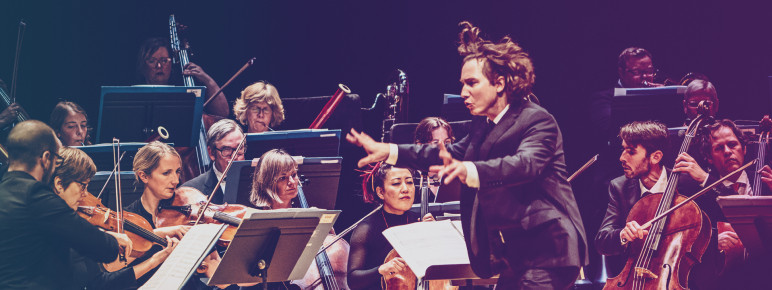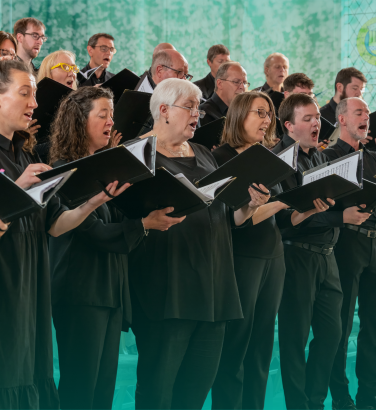
Maxim's Schubert Matinee
15 May 2023
News Story
Programme:
Schubert
Rondo in A
Rosamunde En’tracte No 3
Symphony No 5
As a composer of piano works, chamber music and – above all – songs, Franz Schubert is (to our contemporary ears and minds, at least) peerless. We applaud and admire him for his uncanny ability to unleash effortlessly expressive melodies conveying aching, all-too-modern emotions, and for the profound psychological insights and very contemporary sensibilities of his vocal and instrumental masterpieces.
But Schubert as a symphonist, a composer of concertos, even stage works? Not so much. Which is ironic, since he devoted significant time and effort to his symphonies and his theatrical music during his lifetime (though perhaps less to concertos), only to struggle for recognition – or worse, to have his achievements disregarded. It’s an issue that today’s concert seeks to address.
Schubert was just 19 when he composed his Rondo for solo violin and strings in 1816, and it was probably intended for himself or his brother Ferdinand to perform with the ensemble that had grown out of the Schubert family’s own string quartet. And it reveals a little-known side to the composer. In fact, this Rondo – along with a Konzertstück for violin and orchestra from around the same time – is the closest that Schubert came to writing a fully fledged concerto. Was that dearth of concertante music down to any lack of interest? Not really: the simple reason that Schubert wrote so little for soloists and ensemble is more likely the very limited access he had to top-notch players and professional orchestras.
Schubert had been undertaking an intensive study of Mozart’s chamber music just before writing the Rondo, and you can feel it in the piece’s graceful slow introduction, during which the soloist emerges from the string texture in music that shows off their agility and phrasing right across the violin’s wide range. The faster main section is launched by an impetuous, sunny melody, which returns again and again, interspersed with slightly darker material in the piece’s contrasting episodes. Whatever the music’s passing mood, however, Schubert ensures that his soloist maintains their place in the spotlight almost from start to finish.
Despite his mastery of small-scale songs, Schubert never quite achieved the same success in the field he really strived for: as a composer for the stage, whether in opera or incidental music for plays. Rosamundeis a case in point. Schubert wrote about an hour’s worth of music for Helmina von Chézy’s play Rosamunde, Princess of Cyprus, which opened at Vienna’s Theater an der Wein in December 1823, and lasted for a grand total of two performances. With a convoluted storyline involving a cursed princess, poisoned letters, shipwrecks, ghosts and forced marriage, perhaps its short run is understandable. Nonetheless, it also represented one of Schubert’s many frustrations as a theatre composer.
Among the choruses, ballet sequences and songs that he composed for the play are short interludes intended to be performed between its acts. Ironically, the brief Entr’acte No 3 has become one of the composer’s best-loved orchestral works, undoubtedly because of its beautifully simple, once-heard-never-forgotten melody. Schubert can’t have been unaware of the tune’s immediate appeal: he went on to reuse it in his second set of piano Impromptus, and also in the slow movement of his A minor String Quartet, D804.
We return to the 19-year-old Schubert in 1816 for the concert’s final piece. By the end of that year, he’d completed around 200 new works – including both his Fourth and Fifth symphonies, written within just a few months of each other. (It wasn’t an unusual year, either: over the previous 12 months, he’d written about 150 songs, many of which remain classics of the Lieder repertoire today.)
In his Fourth Symphony, the ‘Tragic’, the young composer grappled with the revolutionary symphonic innovations forged by Beethoven. In his Fifth, however, Schubert shrank his orchestra to more modest size and welcomed in all the joy and wonder that he’d barred from that earlier Symphony, creating an overt homage to that other towering figure of recent years in Vienna: Wolfgang Amadeus Mozart.
Though Mozart had been dead for a quarter of a century by the time Schubert was writing his Fifth Symphony, the earlier composer’s music was more highly regarded than ever – and more popular, certainly, than that of Beethoven, who at that point was eight symphonies through his nine-strong cycle, and viewed as dangerously, unpredictably innovative. Schubert was fascinated by Beethoven, but devoted to Mozart. In October 1816, the same month he completed his Fifth Symphony, he gushed in his diary: ‘As though from afar, the magic notes of Mozart’s music still gently haunt me. So these fair impressions, which neither time nor circumstance can efface, linger in the soul and lighten our existence. They show us in the darkness of this life a light, clear and lovely, for which we may constantly hope. O Mozart, immortal Mozart, how many, how endlessly many such beneficent intimations of a better life have you imprinted on our souls.’
Schubert’s Fifth Symphony would no doubt have received its first performances from the amateur orchestra that met in the apartment of Vienna violinist Otto Hatwig, in which the young composer played viola. But it had to wait until 13 years after Schubert’s death for its public premiere, in 1841 at Vienna’s Josefstadt Theatre.
And if the Symphony is sometimes dismissed as ‘light’ music when compared with the darker, more ambitious Fourth – well, that can only be a compliment. Light it certainly is, in its apparently effortless invention, its endless charm and grace, and its delicate, translucent scoring. Schubert opens his first movement with a miniature ‘curtain-raiser’ for the woodwind, which the first violins can’t help but interrupt with their jaunty main theme. There’s an undoubtedly Mozartian feeling to the movement’s clarity and balance, but also a harmonic richness that makes it distinctively Schubertian.
Light and shadow seem to constantly shift in the gently tripping second movement, officially the slow movement but not terribly slow at all. The third movement, a minor-key minuet, provides the Symphony’s stormiest, most dramatic music, despite its lighter, more bucolic central trio in the brighter major. And Schubert offers plenty of mischievous harmonic surprises in his bouncy, scampering fourth movement, a masterclass in transparent orchestration.
Related Stories
![]()
Silent Night
12 December 2025
As an early Christmas gift from us, enjoy this special choral treat, filmed in Leith Theatre!![]()
The Great Grumpy Gaboon: a catch-up with Corrina Campbell and Jay Capperauld
8 December 2025
Our family show is back in the New Year, and the Gaboon's still grumpy!![]()
SCO string quartet perform at Dunard Centre groundbreaking ceremony
5 December 2025
Dunard Centre Groundbreaking Ceremony Chair Ronnie Bowie with partners


